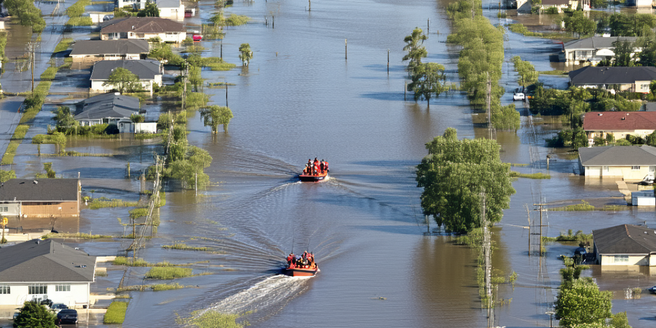
Understanding Weather Extremes and Their Impact on Insurance
Weather extremes are becoming more frequent and severe, presenting a significant challenge to the insurance industry. Understanding these phenomena is crucial for insurers to assess risk and manage claims effectively. Climatic events such as hurricanes, floods, and wildfires cause substantial property damage and financial loss. Insurers must adapt their models to account for the increased unpredictability and magnitude of these events. By leveraging data analysis and meteorological insights, companies can better predict weather patterns and tailor their policies accordingly. This proactive approach not only helps in risk management but also shields consumers from unexpected financial burdens. As weather extremes continue to evolve, the insurance sector must stay informed and agile to minimize their impact.
Assessing the Financial Risks of Natural Disasters
Natural disasters pose a complex challenge to the insurance industry due to their unpredictable nature and extensive impact. Financial assessments must consider both immediate damages and long-term economic repercussions. Insurers need robust models that incorporate historical data and predictive analytics to forecast potential losses. Understanding the geographical and temporal patterns of disasters allows companies to set appropriate premiums and reserve funds for probable events. Effective risk assessment aids in maintaining solvency and supports sustainable business operations. By aligning financial strategies with disaster risk projections, insurers can better navigate the uncertainties posed by natural disasters, ultimately protecting their bottom line and customers.
Insurance Policy Adaptations for Climate Change
Climate change necessitates a reevaluation of traditional insurance policies to effectively manage escalating risks. Insurers are redesigning coverage options, factoring in the dynamic climate landscape to offer comprehensive protection. Policies now increasingly consider longer-term risks associated with rising sea levels, prolonged droughts, and other climate-related factors. Insurers are also promoting preventive measures among policyholders by incentivizing risk reduction practices, such as reinforced construction and eco-friendly infrastructure. These adaptations aim to create a more resilient insurance framework capable of enduring climate change impacts. Through forward-thinking policies, the industry not only safeguards its own viability but also contributes to broader ecological and societal resilience.
The Role of Technology in Mitigating Insurance Challenges
Technology plays a pivotal role in addressing contemporary insurance challenges, particularly those amplified by climate change. Advanced analytics, big data, and machine learning enable insurers to accurately model and predict risk. Innovations in artificial intelligence are further revolutionizing the way insurers assess and respond to potential threats. Technologies like satellites provide real-time data, enhancing disaster response and claim processing. Digital tools also improve customer interaction and streamline underwriting processes, fostering more agile and transparent insurance operations. Furthermore, blockchain technology ensures security and transparency in contracts and transactions. Embracing these innovations supports the industry’s transformation, enabling insurers to better navigate a volatile world while providing robust coverage and customer service.
Regulatory Responses to Increasing Weather Events
As weather events intensify, regulatory frameworks must adapt to ensure industry resilience and consumer protection. Governments are increasingly implementing policies that mandate insurers to maintain sufficient capital reserves and robust risk management strategies to cope with escalating claims. Regulatory bodies are also encouraging transparency in policy terms, ensuring that consumers are well-informed about coverage limitations and exclusions. These measures aim to protect both insurers and policyholders from systemic shocks caused by extreme weather events. By fostering an environment of accountability and preparedness, regulators help to stabilize the insurance market and assure a fair and functional system for all stakeholders.
Future Strategies for a Resilient Insurance Sector
The insurance sector faces the pressing need to develop future-oriented strategies to withstand climate-related challenges. Embracing sustainability and risk mitigation measures is crucial for long-term resilience. Insurers are investing in research and development to innovate products that cater to evolving risks. Collaborative efforts with governments and non-profits are enhancing knowledge-sharing and resource mobilization in disaster-prone regions. The shift towards sustainable investments and green insurance practices reflects the industry’s commitment to environmental stewardship. By focusing on proactive strategies and partnerships, insurers aim to build a resilient framework capable of withstanding the impacts of climate change while ensuring continued protection for their clients.
